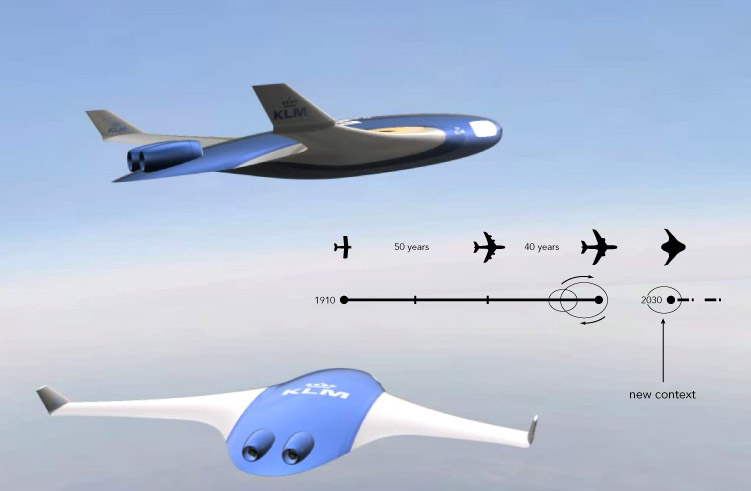Interior concept
Future Passenger Cabin
Project Type
Client
TU Delft / CleanEra
Year
2009
Collaborators
Aerospace Faculty
KLM
KLM
A blended wing body (BWB) aircraft saves substantial amounts of fuel and reduces noise, CO2 and NOx emissions because it is shaped like a wing and can transport up to a 1000 passengers. The passenger cabin is located inside the wing, resulting in the absence of windows in the sides of the aircraft. This makes it hard for passengers to orientate and could cause motion sickness or claustrophobia. To break this development barrier, this new interior concept proves that it can be a comfortable and commercially attractive concept as well.
Concept
Sharing the view

A scenario was developed in which passengers share large windows in the front and rear that they can approach for relief, entertainment and socializing, in fact separating private and social space. In the resulting design, the sightlines at these windows and the exits are kept intact from all seats in the cabin to give passengers a constant reference to the outside and make them feel more in control.
The open space above the seats gives them the feeling of having much more space than the actual space the seat offers. Electronic aids, like virtual horizons and in-seat camera views of the exterior, complement this solution to make greener air travel also comfortable and profitable.
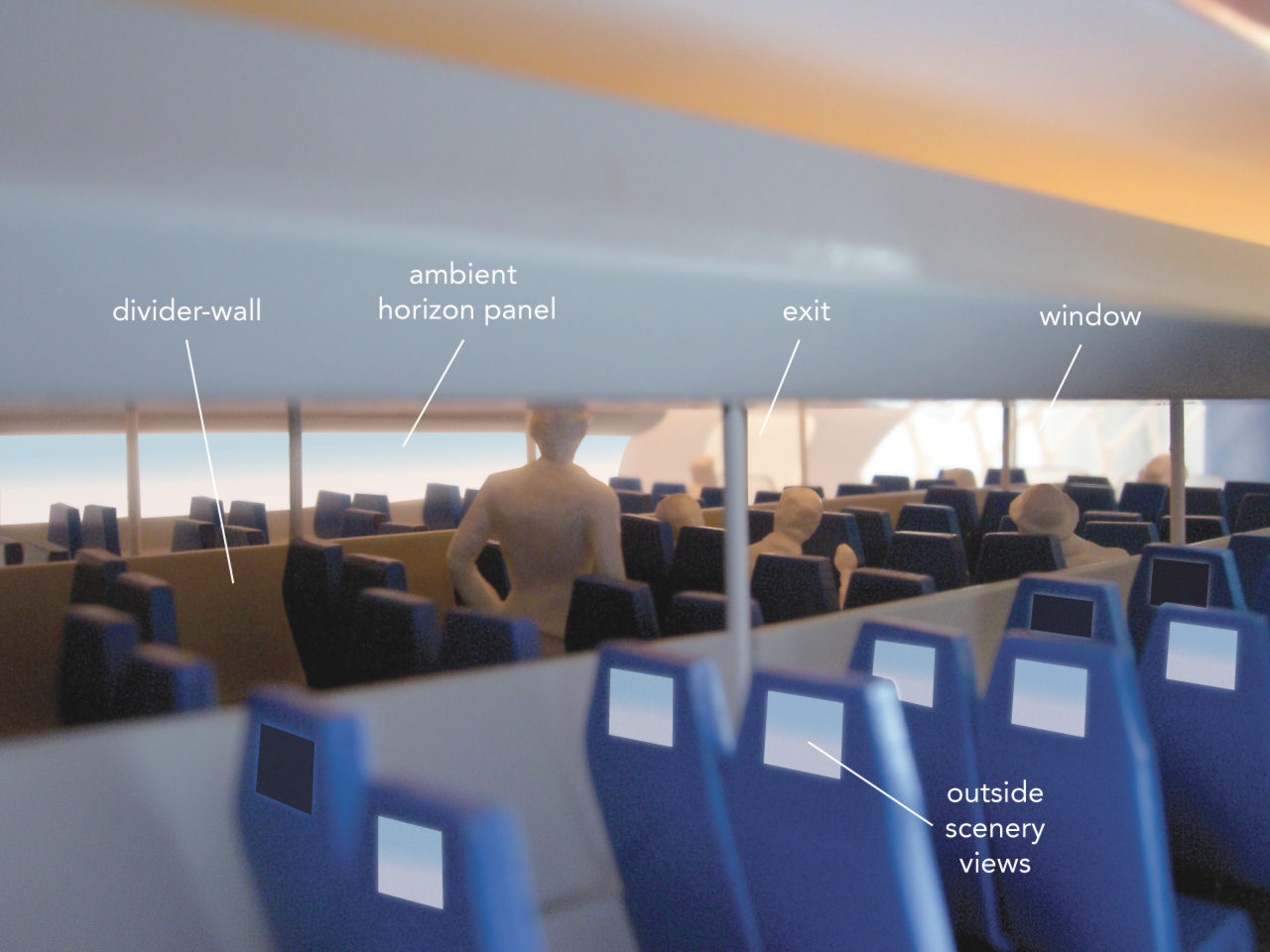
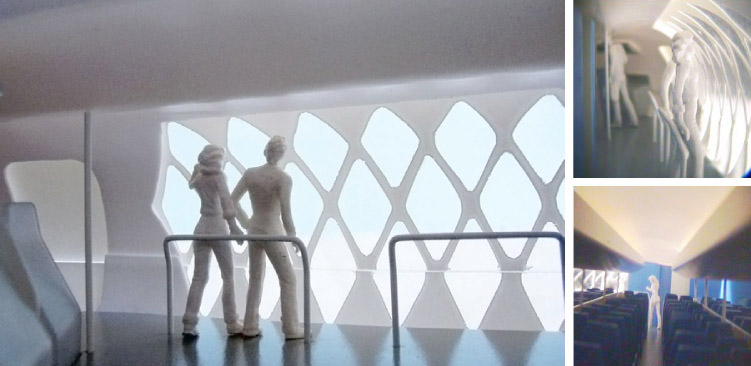
Motivation
Scenario

The environmental and economic benefits of a more efficient aircraft are clear. The BWB aircraft shape, a large wing, has been a promising solution for greener air travel for years, but no feasible solution had been found for the passenger cabin. Whilst many developments have been made to make this concept work technically, little has been achieved to make it a desirable way of transport for the passenger. Believing strongly in the potential of this aircraft concept, I took the opportunity to design a fitting passenger experience to the new cabin’s topology.
An explorative research with frequent flyers brought the inspiration for a solution that uses ‘the need to socialise’ and ‘the need to move around’ to compensate for ‘the lack of windows’. Comparable to the deck of a ship, the panoramic social space offers passengers a short break from their seated state, but isn’t comfortable enough to stay for a long time, so that everyone can enjoy it for a while. Sharing the few available windows equally with all passengers makes it a solution that matches the ongoing shift in aviation: from a ‘luxury for the happy few’ to the ‘convenient transport for the masses’.
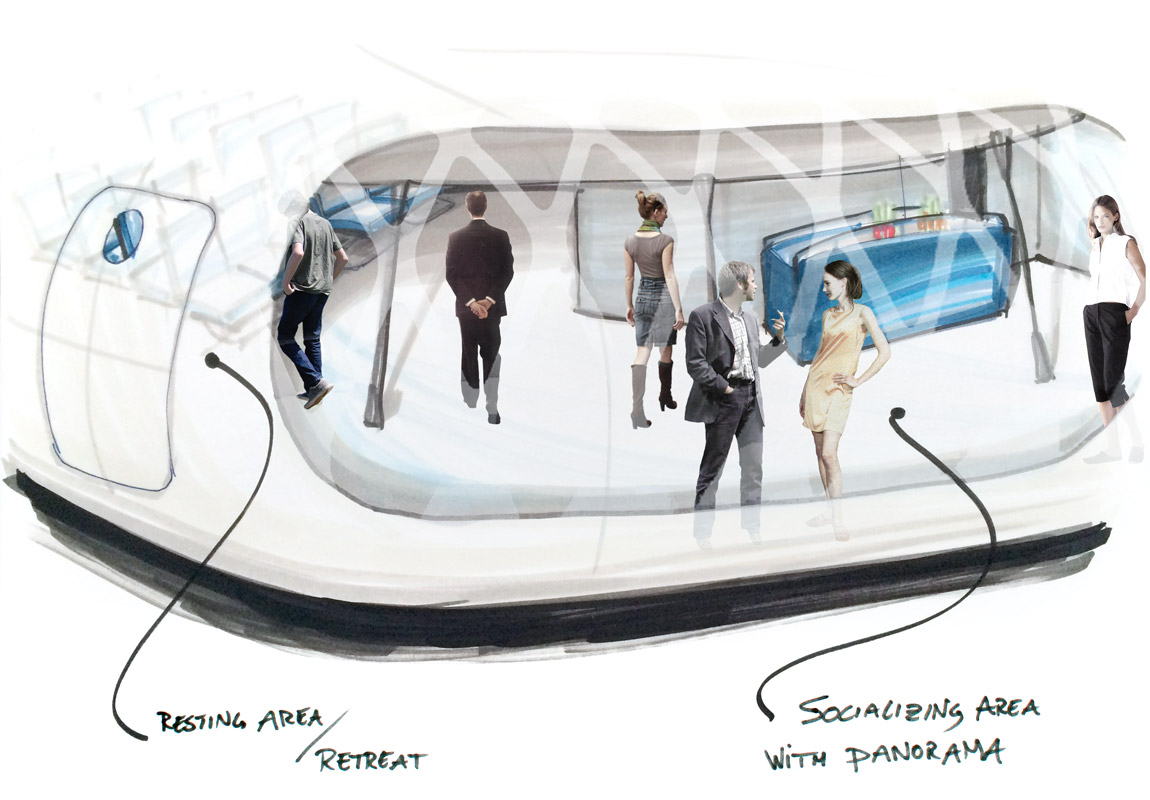

PROCESS
Structure

A new structural solution for this type of aircraft (a composite pressure cabin that uses vertical tension beams) created the possibility to apply an interior configuration very different from conventional tube-compartmentation. The resulting flat and wide cabin created the need to re-evaluate the passenger’s travel experience. Instead of applying familiar solutions to a new context a fresh approach was used, starting at the wishes of the passengers and working towards integration with the technological context. – Separating private (contained) space and social (open) space, for subsequently quiet and active moments of the journey, offered part of the solution to make it a comfortable means of transport.
However, the introduction of shoulder-high dividers made it also commercially very attractive: high-density seating, increased privacy and an alternative to the ‘window-seat’. The project did not only explore the possibilities for the passenger experience but also pinpointed the criteria for the future design space of BWB aircraft: indicating how to configure the aircraft to suit the passengers and the airlines best. Much time was spent on subjects like compartmentation, evacuation, cargo locations and boarding procedures.
Although still in a conceptual phase, a feasible solution for a comfortable and efficient future of air travel has been given.
Although still in a conceptual phase, a feasible solution for a comfortable and efficient future of air travel has been given.
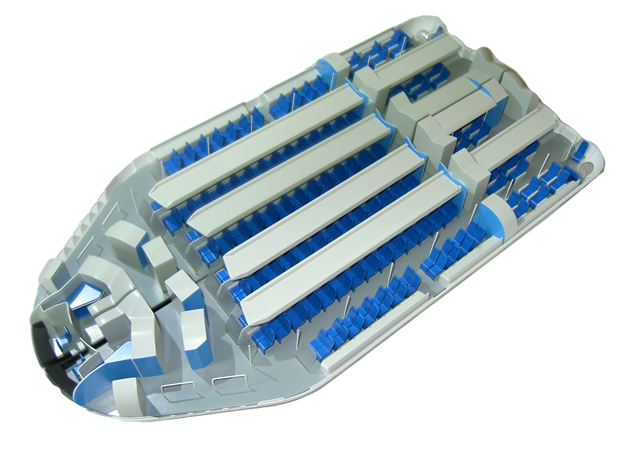
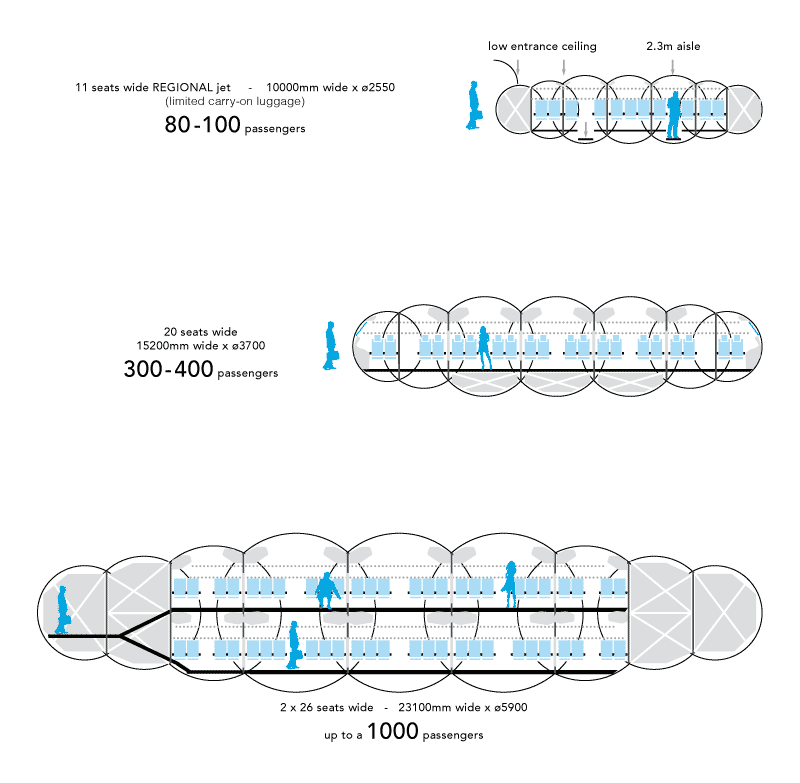
A 3D-printed model of the section of the cabin structure (L) and the hull of the Blended Wing Body aircraft (R) at the Connecting Concepts exhibition in Ahmedabad, India.
